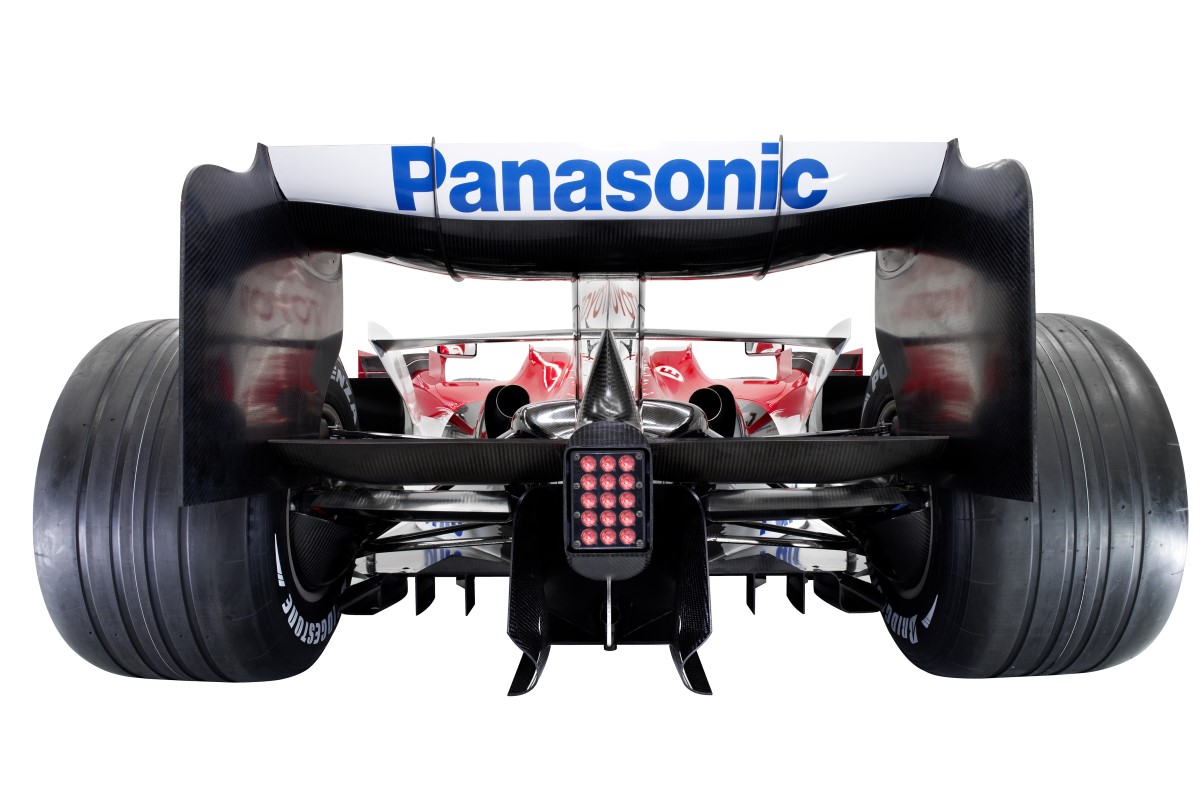Behind the Scenes – At the Track with the Toyota F1 team
 |
All the hard work back at base in Cologne is focused on one thing, succeeding on the track, but the final push comes at the circuit, where the efforts of engineers, mechanics and drivers combine.
Panasonic Toyota Racing’s travelling band of race team members will visit 18 circuits this year, some, like Spa-Francorchamps, just an hour’s drive down the road, and others half a world away. But, whatever country or continent the team is working from, the challenge remains the same – as do the demands.
At each track, around 80 team members need work space, starting with the garage itself. The team begins with a blank canvas, an empty garage space in which to assemble a purpose-built interior, which gives mechanics and engineers the best possible working environment.
The perfectly formed garage interiors, with computer stands for telemetry, neat tool boxes and all the equipment necessary to go Formula 1 racing take around eight hours to build and vary in size from 120 to 180 square meters.
From here, the mechanics work on the race cars and engineers monitor banks of data screens, analyzing every aspect of the car’s behavior on track. In the back of the garage, colleagues prepare tires and spare parts.
All the spare parts must be ready to be called upon at a moment’s notice, ensuring the team is prepared for any eventuality. This is not just a spare tire and some extra engine oil – in a Formula 1 garage there is literally a car waiting to be built.
Team Manager Richard Cregan says: “You normally have enough parts in the truck to build another car. So effectively you have four complete cars, one in spare parts and three complete. That’s more difficult at the beginning of the season because you have a new car and new specification but that’s the target we have."
One of Richard’s tasks is to ensure everyone on the team, from drivers, engineers and mechanics through to marketing, catering and PR staff, has a suitable workplace.
“We can’t influence so much the performance of the car from the logistics department but certainly in terms of creating the atmosphere for people to do their job and perform, that is something we can do," he says. “Quite often you have very long days, people working late into the evening. It is very important to make sure those people have the right environment to work in and that’s our challenge."
At European races, the task is made easier by specially-developed trucks. These are pulled by MAN tractor units and feature storage space at the bottom and offices on the second floor. At flyaway races, circuit offices are provided.
A race engineer has more work stations than anyone in a Formula 1 team. From his office in the engineering truck, or from his station in the garage during practice or his spot on the pit wall for qualifying and the race, he provides a vital link from the driver to the engineers and mechanics.
Gianluca Pisanello and Francesco Nenci are always at their driver’s side, whether dissecting the latest data from a practice session or making make-or-break decisions via the radio during qualifying or the race. Without their race engineer, a driver’s life would be even harder.
They bring crucial engineering expertise, but one of their most important skills is in forming a special bond with their driver, enabling them to translate his feedback into real improvements in performance. Francesco, who has been a race engineer at Panasonic Toyota Racing since 2005 after joining the team in 2001, explains: “You always have to somehow translate the mechanical aspect of the car and the systems in a way that you can link them to his sensations."
A close bond and good communication make a successful partnership between race engineer and driver, but for Gianluca, who has worked at races with Jarno Trulli since late 2006, one further factor is of obvious importance. He says: “Jarno does not behave like a superstar, he likes simple things, he likes to stay with his friends, he doesn’t like the spotlight but the most important thing for me is that when he jumps into the car he is extremely fast."
While Francesco, Gianluca and their engineering colleagues work hard in the offices at the track, the garage is also a hive of activity as the team of mechanics work on every aspect of the car – making set-up changes, preparing tires and fuel, repairing any damage and, importantly, double-checking everything is working as it should.
What starts as a large open space is divided into smaller working rooms, with an engine and gearbox area, a bodywork area, a tire area and, of course, the front garage where the three cars are worked on.
Mechanics work long hours at every Grand Prix, never stopping until every task is complete and the car is ready to race, a fact not lost on Jarno. He says: “It is a strong relationship between a driver and his mechanics. Don’t forget that our life is in their hands.
“They work very hard on my car, they make very few mistakes and they do a good job. There is a strong relationship between us. I must admit I see them during the season more than my family because we spend more time together. We get on well, sometimes we go out for dinner, we laugh, we smile and sometimes we cry together but that is part of the job."
Whether laughing or crying, the mechanics, the race engineers, the logistics team and everyone else at the track wearing Panasonic Toyota Racing colors is working flat-out as a team for success in the 2008 season.
